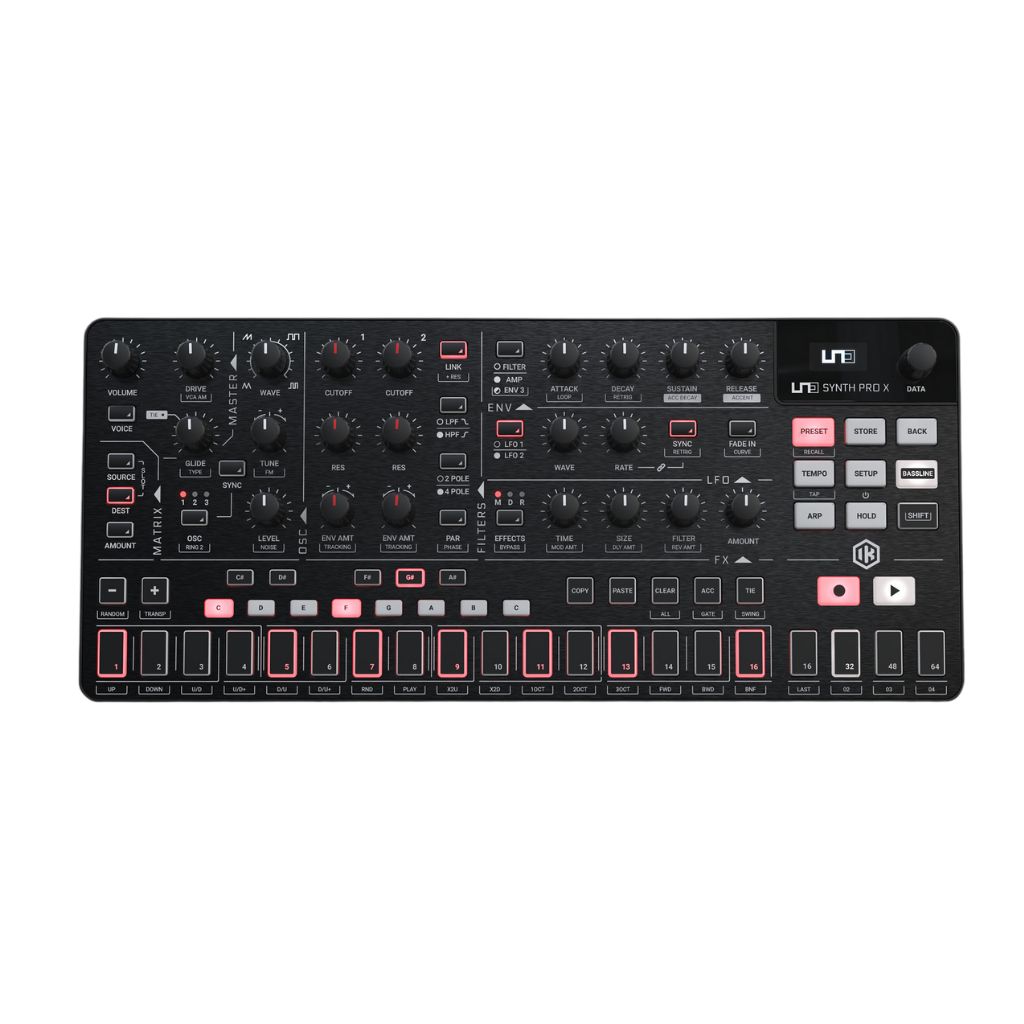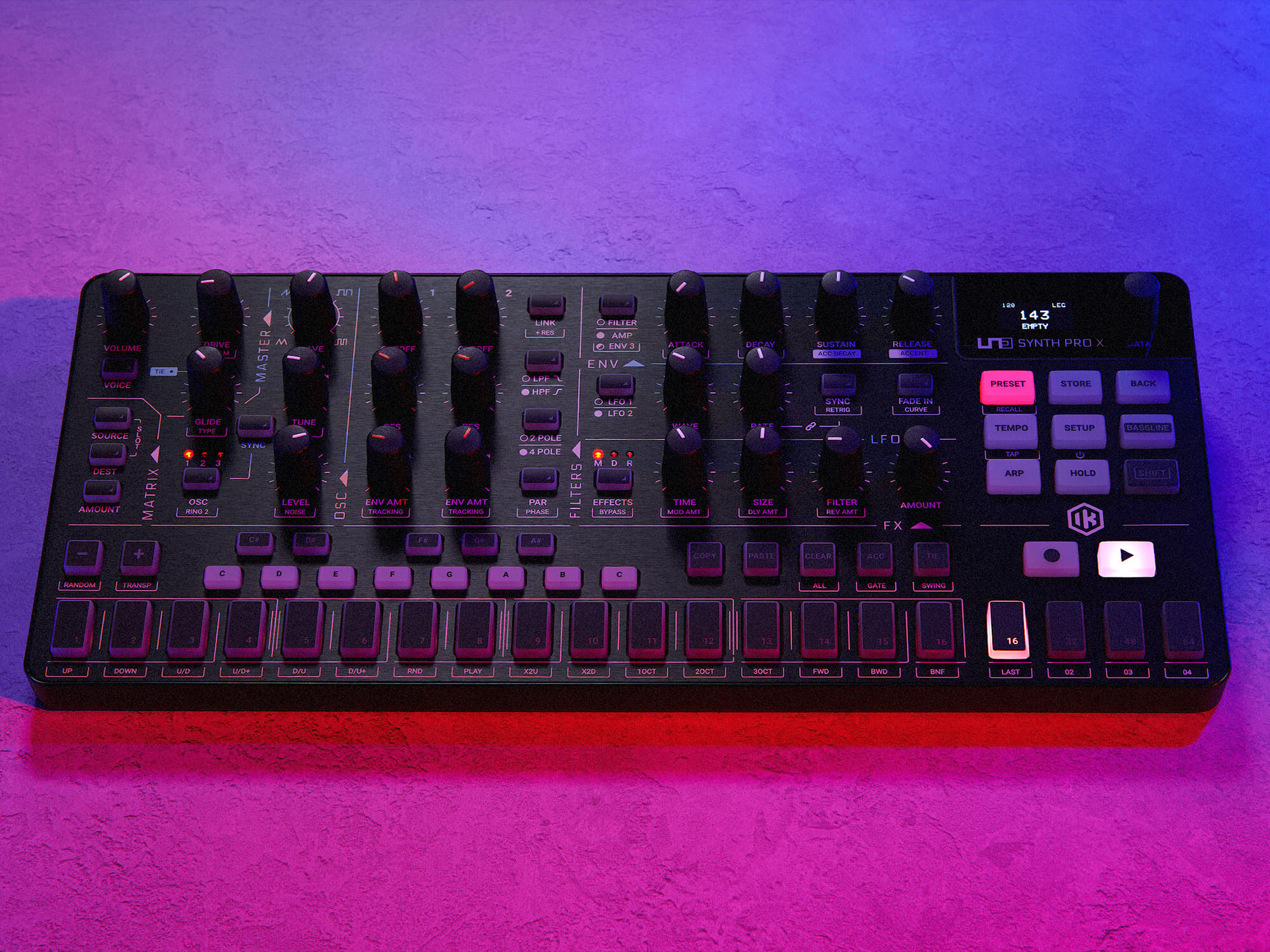
IK Multimedia’s UNO Synth Pro X is what the synth community deserved from the start
Making the Pro X a machine focused on creation and experimentation required a radical rethink of its predecessors interface – it’s the synth the developers always wanted to make
Image: Simon Vinall
Enrico Dell’Aversana is effusive when he talks about the new IK Multimedia UNO Synth Pro X. As well he might be – as the brand’s product manager, he has overseen a complete user interface redesign that reimagines its predecessor as an instrument focused on creation, performance and experimentation (he describes previous version as a ‘preset machine’).
“We really thought about how people use and experience the synth and we wanted as many people as possible to be able to have a good experience using it” he tells us from his base in Italy.
The new model is the result of extensive consultation and feedback from the synth community. Building on the powerful synth engine from the UNO Synth Pro, taking control of the redesign process gave Enrico and his team the chance to address what some producers felt were the shortcomings of the original. Largely, in the lack of hands-on control that it offered.

“We wanted to gather as much information as possible about how people were using the synth and how they wanted to use it – otherwise it would just be just my point of view. When we did the first UNO Synth Pro, I wasn’t fully involved in the project; the interface wasn’t something I had a lot of input into. But with the Pro X, I took complete control of everything from the user experience to the decisions about which potentiometers to use. I think, with the mechanical designers, it took us a month and a half to come up with the knob specifications.“
This approach is applauded by YouTuber and synth aficionado BoBeats, who provided feedback not only on the original synth but on where he thought its successor should be aiming, as a self-professed ‘synth nerd.’
“It started when I was checking out the original UNO Synth Pro”, he tells us. “It was a great synth but I sort of knew immediately that the physical UI and the colour scheme didn’t quite do it justice. I talked to IK about the expectations when you are a synth nerd and you have something that is this advanced – you don’t really see features like these on an analogue synth under $1,000. I tried to convey to them what I’m drawn to as a user.”
Bo’s issues with the original synth were less about its powerful sound engine and more about the way it limited your access to its parameters. He explains “[IK] took a lot of the ideas from the original UNO Synth Pro and thought, ‘OK, we have to create something that has a look that’s equivalent to the power inside. I think the team figured out the balance between the complexity of the sound engine and an interface that is still accessible.
“On the original UNO Synth Pro, I found as a synth educator that you have all this power but only a few knobs to turn, and you’re going through lots of submenus, which can be difficult to demonstrate to users.”
Enrico confirms that opening up the incredible depth of programming capabilities to faster and easier control by the user was paramount when he approached the design of the new model. “The UNO Synth Pro was really a preset machine, so you went into your studio and prepared your presets and sounds and they were easy to call up. And the same for the keyboard version – you go to the stage and play without much experimentation.”
“With the Pro X, I wanted to create more of an experimentation machine; to really focus on the involvement of the user in creating the sounds instead of just recalling presets. So the interface had to be completely different – more tactile, easier and faster to use. And that’s why the sequencer is way more prominent in the interface. In 2023, a lot of synth aficionados aren’t necessarily keyboard players.”
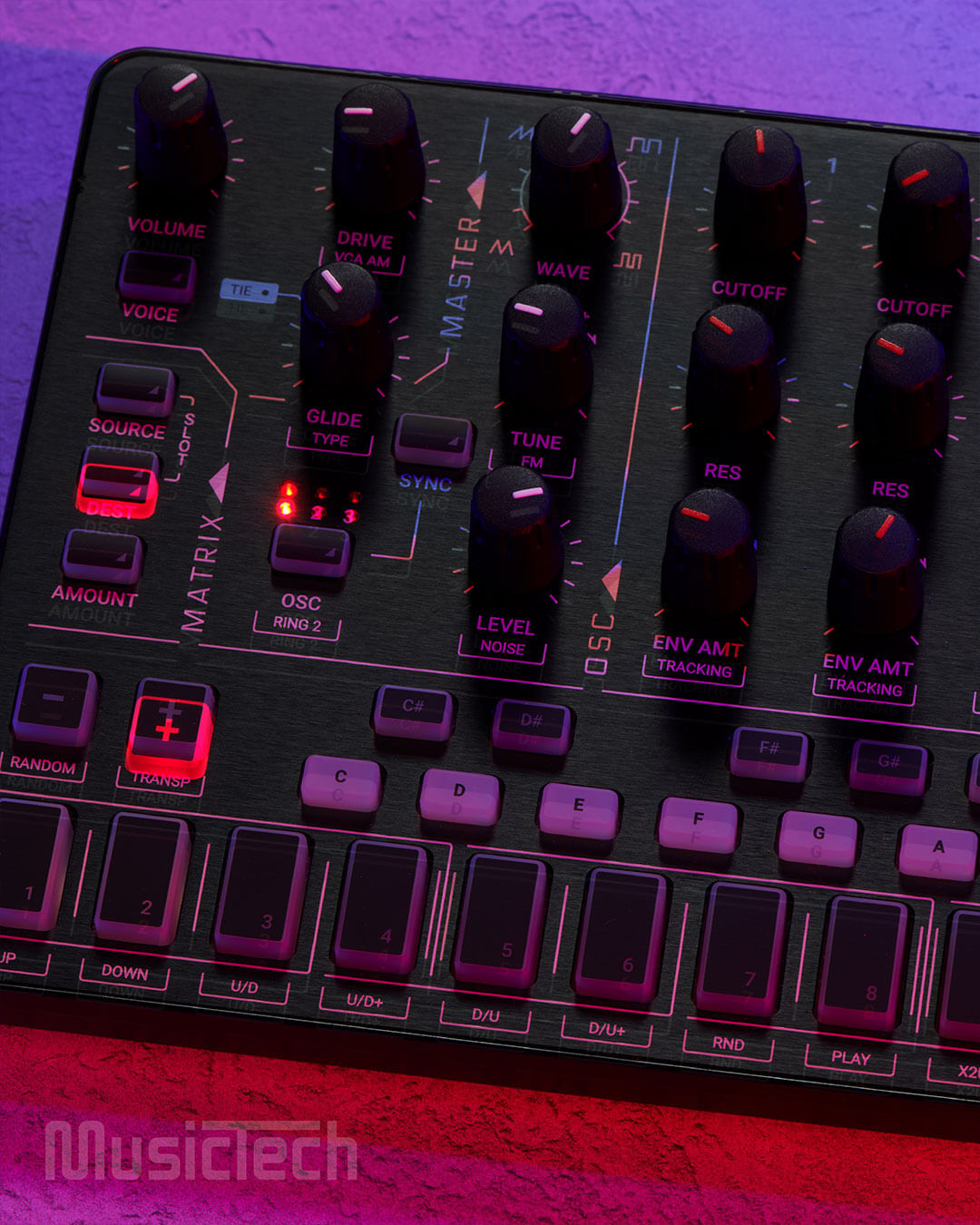
Bo concurs about swapping the prominence of the keyboard and sequencer, suggesting that it’s a better fit for the synth’s audience. “On the Pro X, IK have put the sequencer front and centre which makes a lot of sense because it’s something you interact with a lot. The keyboard now features less prominently – in fact, on the original, it wasn’t the greatest quality – and I think people are much more likely to program the Pro X using the sequencer than by playing its onboard keys.”
The Pro X (Enrico suggests, half-jokingly, that the ‘X’ is for experimentation) packs a lot of functionality into its compact and very portable frame, including three discrete wave morphing oscillators, dual filters with an OTA-based multimode filter, 10 stereo effects, a paraphonic 64-step sequencer, 10-mode arpeggiator and a host of CV/gate ins and outs to connect to your other analogue studio gear and computer, with a companion plug-in for preset management and remote operation. The extensive feature set sounds like it could exclude less-experienced creators, but neither the designers nor those who have used it extensively see that as being the case.
Discussing the kind of person who would get the most out of the Pro X, Bo suggests that it depends on how complex you want to go. “If someone just wants a simpler bass synth for example”, he says, “they might think about a Korg Minilogue XD or something like that.”

He continues, “To be honest you can use it as a beginner or an advanced user but who is the ideal user? It’s an intermediate to advanced user that will get the most out of it. As a beginner, you can use its depth – a mod matrix, advanced sequence programming – as a learning tool.”
Enrico agrees. “What I had in mind was to make a synth where, even if you’re less experienced, you can get familiar with it because the layout makes sense – it’s very Moog-ish – so you know where things are. But as soon as you know what you’re doing you will discover new things, and start connecting things.
“When we were designing the synth, the idea was ‘maybe the user doesn’t know everything about synths yet but they want to be able later on to do more and more.’ So, yes, it’s for people who know what they’re doing but also for those that don’t yet, but will grow into it. You can do simple sounds but you can grow with it over time.
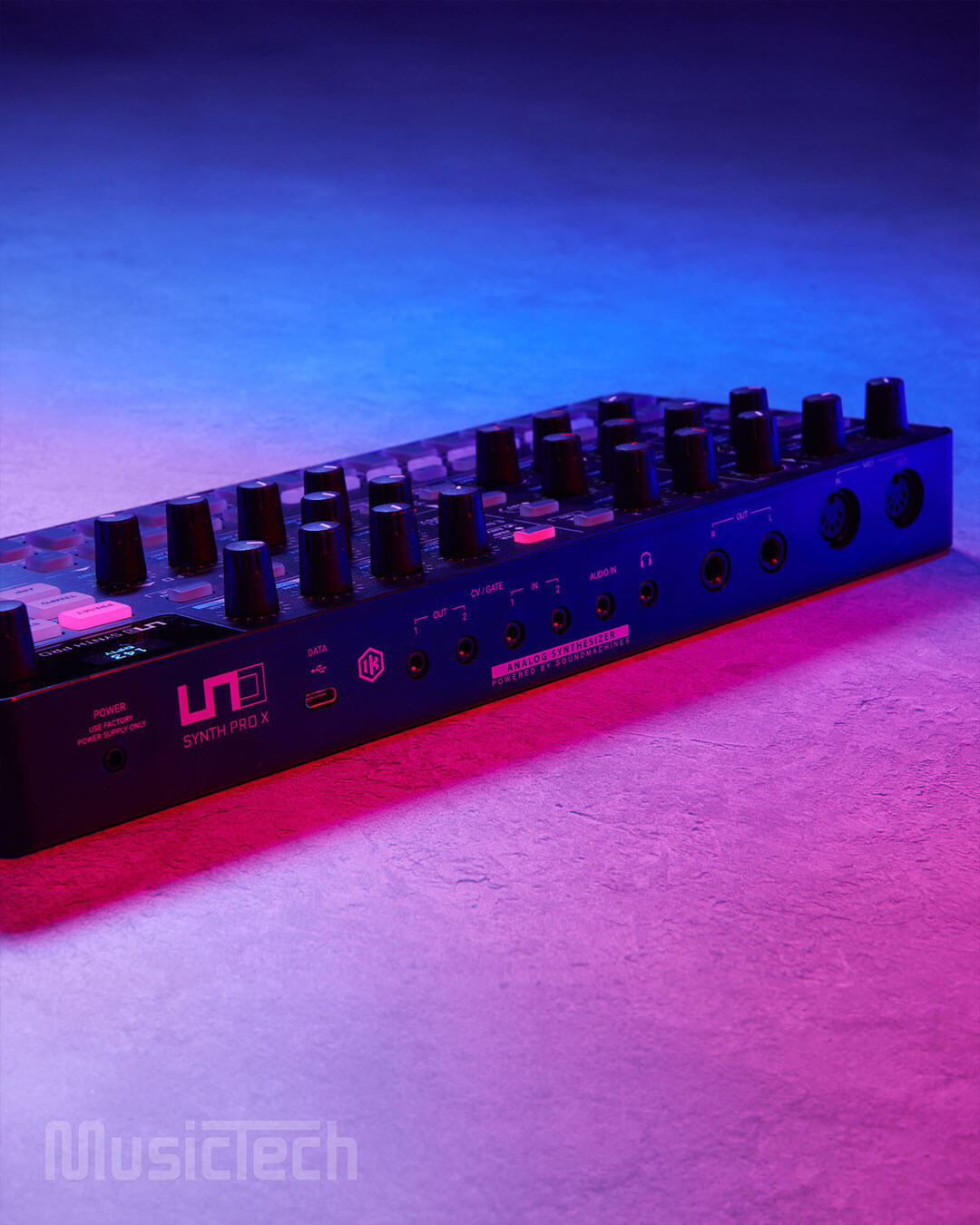
“We designed it to be an investment for people. I’m the kind of guy who saves to buy the synths I like. When I go and buy something, it’s not because of the brand or how Instagrammable it is, but how long I’m going to be using it for, how much it’s going to give me in exchange for my money.”
Price is a factor that comes up in discussions about the Pro X, which IK has tried to keep as affordable as possible while maintaining a feature set that you don’t necessarily see in comparably priced synths. MusicRadar describes it as “well-priced” and while Bo suggests that trying to get the price down by $100 could potentially make it an easier sell, that’s arguably true of any product.
Most people who have tried it out agree that the Pro X occupies something of a unique position in terms of its features versus its price. In his review, Loopop identifies some monosynths out there that can be had for a couple of hundred less – mostly from Behringer – but generally lack onboard effects and sometimes presets, and are typically not paraphonic. For a little more money, he identifies the Behringer Deepmind 6 and Arturia MiniFreak as possible alternatives, albeit with different feature sets.
Enrico highlights the tradeoffs that he feels other synths appear to make when balancing features with cost – and why he feels they got the balance right with the Pro X. “For the price, it really doesn’t have that many compromises compared to the competition. You can have a polyphonic synth, but it won’t have a sequencer with this level of depth. Or it doesn’t have this breadth of effects. Or you get a monophonic synth that has a keyboard but no effects or lacks a good sequencer. Or doesn’t have presets! Even if some people don’t need them in 2023, you need to provide the facility to save presets.”
Bo tells us that, in his opinion, the decision to go with a more portable build as opposed to super-premium for cost reasons is the right one. “If IK had gone with an even more expensive build and a higher price, that could have been problematic because UNO Synth is supposed to be accessible; it’s not supposed to be a super-premium and expensive product. I think it’s on the reasonably priced side of things. It’s really about what IK is aiming for here.”
But for him, its position as the flagship of the UNO range still makes sense. “I like what IK is doing – it would have been easy to make another super budget synth but its saying, ‘OK, let’s increase the budget and improve the physical design and focus on the small details.’ And it’s a synth that’s designed for enthusiasts, so I think that’s the right way to go.”
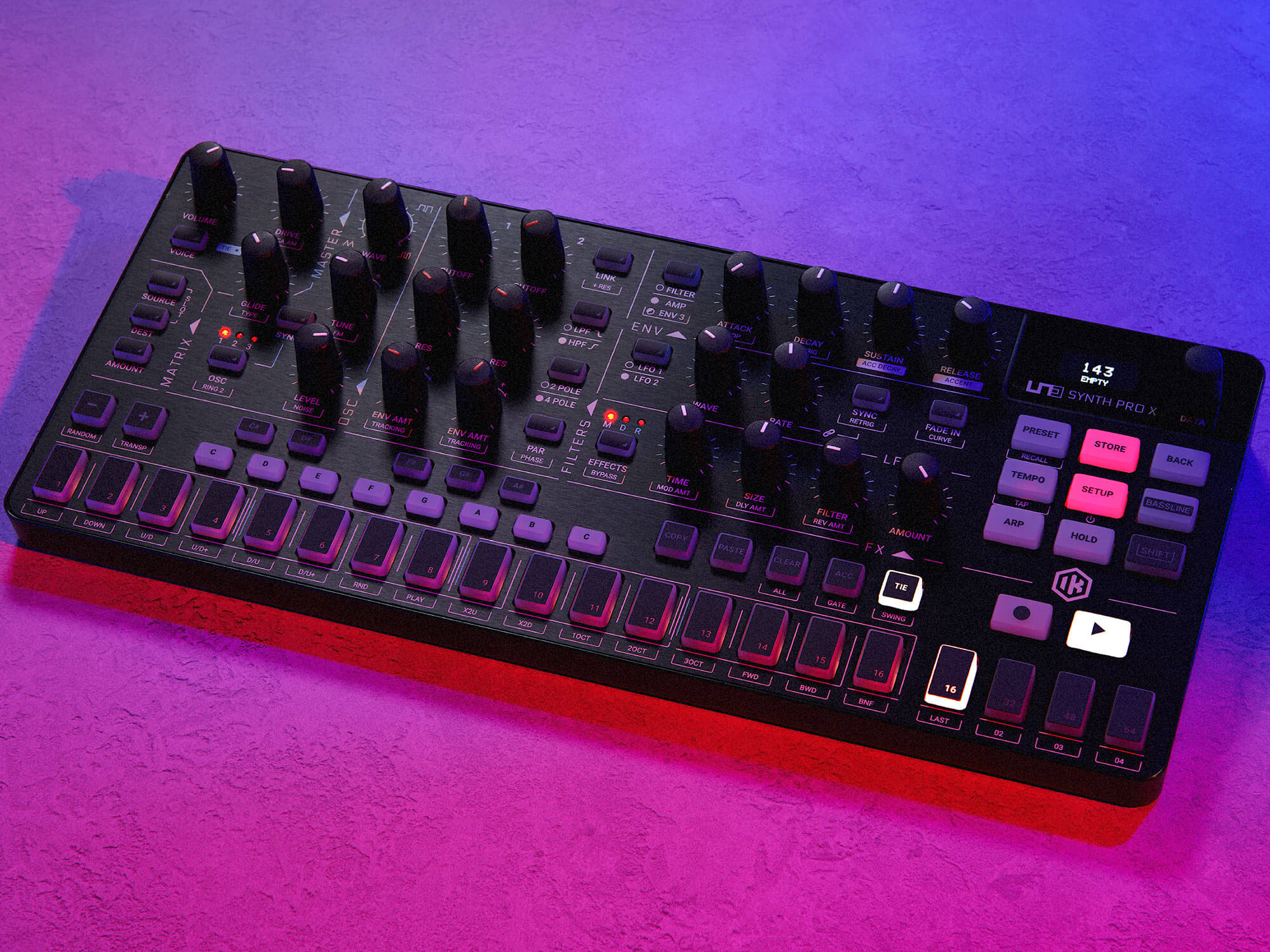
Enrico expands on the design decisions that were made when re-imagining the physical interface and software for the Pro X – not all of them financial by any means. “We have a very powerful analogue synth engine that’s quite hard to find for the price. Very few have two filters – maybe the Korg MS20, of which I am a huge fan. I traded off some features in the Pro for others in the Pro X.
“A simple example is that, in the original, there was a compare function that toggled between saved and current versions of a sound. But in the Pro X, there’s a record function. The idea is that someone might be experimenting with a sound and not necessarily know how they arrived at the end result so now they can wind back and find out.”
And it’s not just a case of adding a bunch of features either – a lot of tweaks were made along the way. Enrico continues; “we dropped the old phaser and flanger; great effects but not that popular any more. And I went for a Univibe effect which is weirder.”
Other changes were mostly in the refinement of the analogue engine. “The presets between old and new machines aren’t compatible for the simple reason that I changed so much about the internal design of the engine –smoothing off the rough edges. And we added the bass mode. I’m a huge fan of the TB-303 so that’s a feel that we wanted to give to the users.”
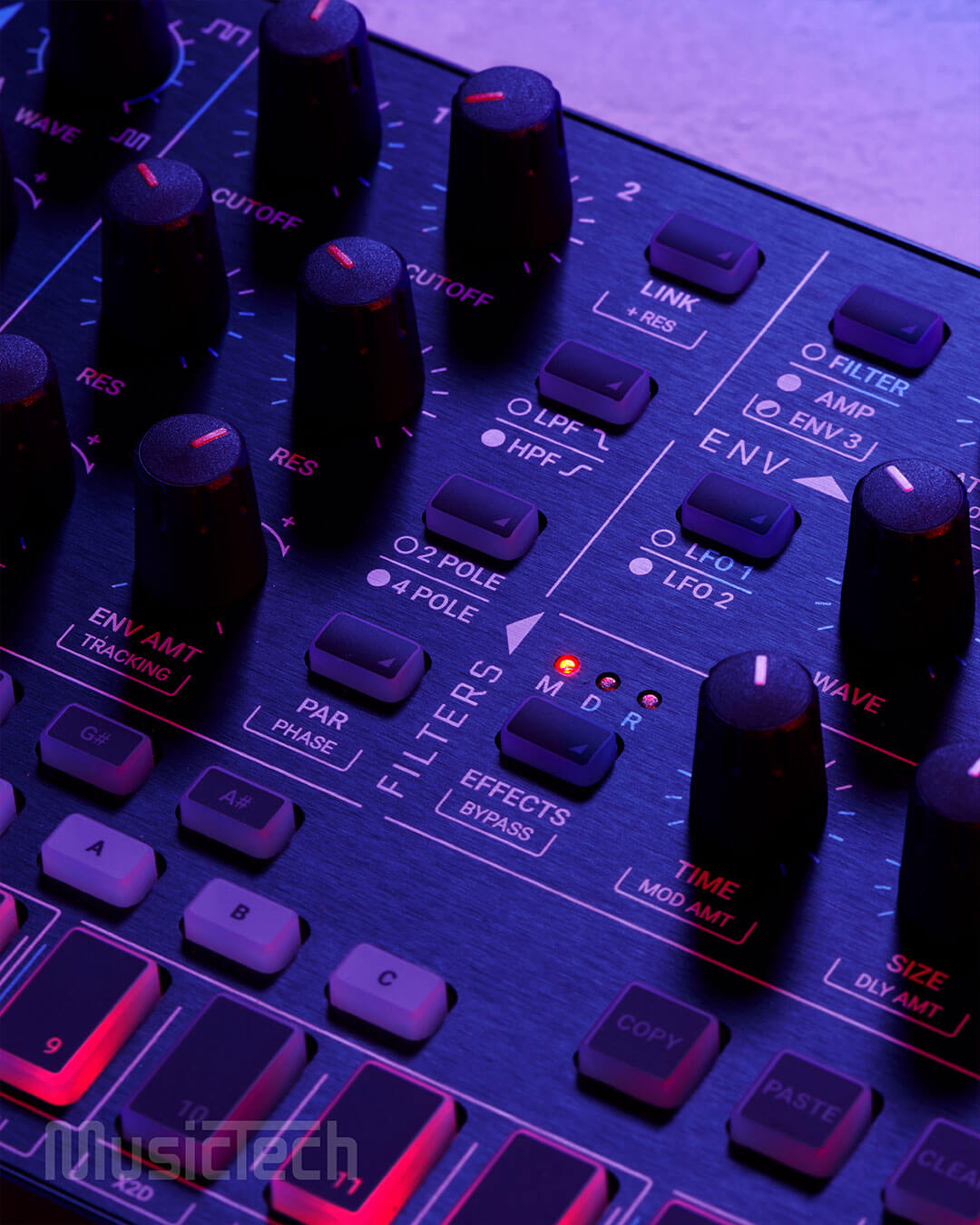
However, IK is keen to stress that, unlike some other synth manufacturers, it isn’t trying to imitate any particular sound or chase trends but leave its mark in a crowded field. Discussing the wider market, Enrico opines: “To me, it shows that some other companies are holding back from giving everything they could. So with the UNO Synth Pro X, you get something that has all these features for the price or less than the price of something that doesn’t, but that has a brand.”
“We’re not a clone company and we’re not trying to be somebody else – we have our own sound. We’re going to give you another choice of sound, adding another flavour into your cooking, as it were. And how could you do that without doing something different? We give you a new flavour, without being someone else, and for a price that is reasonable – and that was the whole idea!”
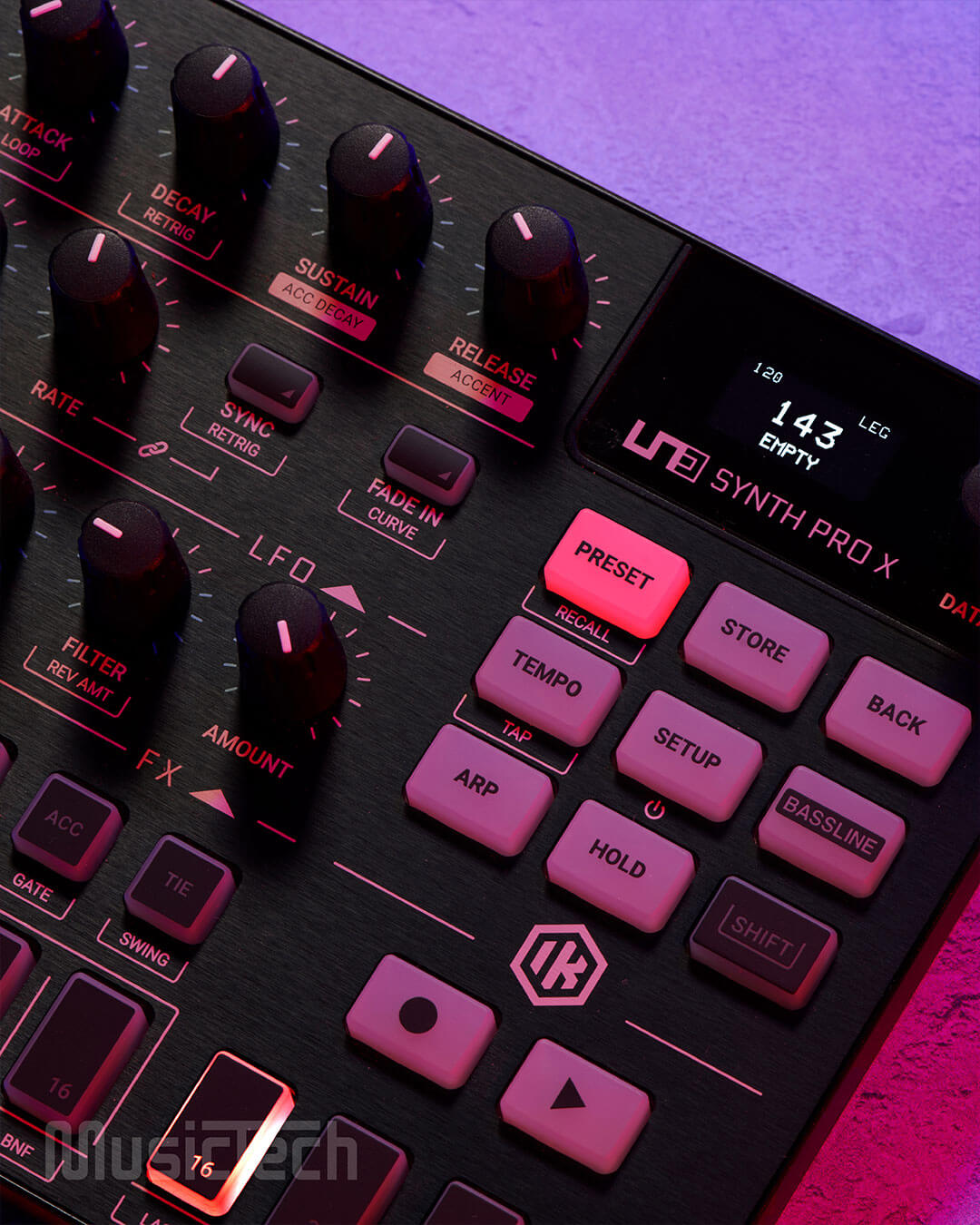
He credits his team, Davide Mancini and Luca Starna from Soundmachines, Francesco Spelta (industrial designer) and Enrico Iori, the CEO of IK “who helped in many ways and let us go for it”) for the success of the project.
The last word goes to Bo, clearly enamoured of the Pro X. “IK has really listened to the feedback it got from the whole synth community – improve the build quality, give us more hands-on control and show us on the front panel how deep and complex it is. I feel like the team pushed really hard within the company to get what they wanted. With the original, I had a lot of suggestions but with this one, they took my wish list – not literally – but they took it and made it happen.”
No doubt, however, that even the UNO Synth Pro X will leave producers with a new wish list of features; no doubt IK Multimedia and Enrico will be on the lookout for more ideas.
Learn more about the UNO Synth Pro X at ikmultimedia.com.
